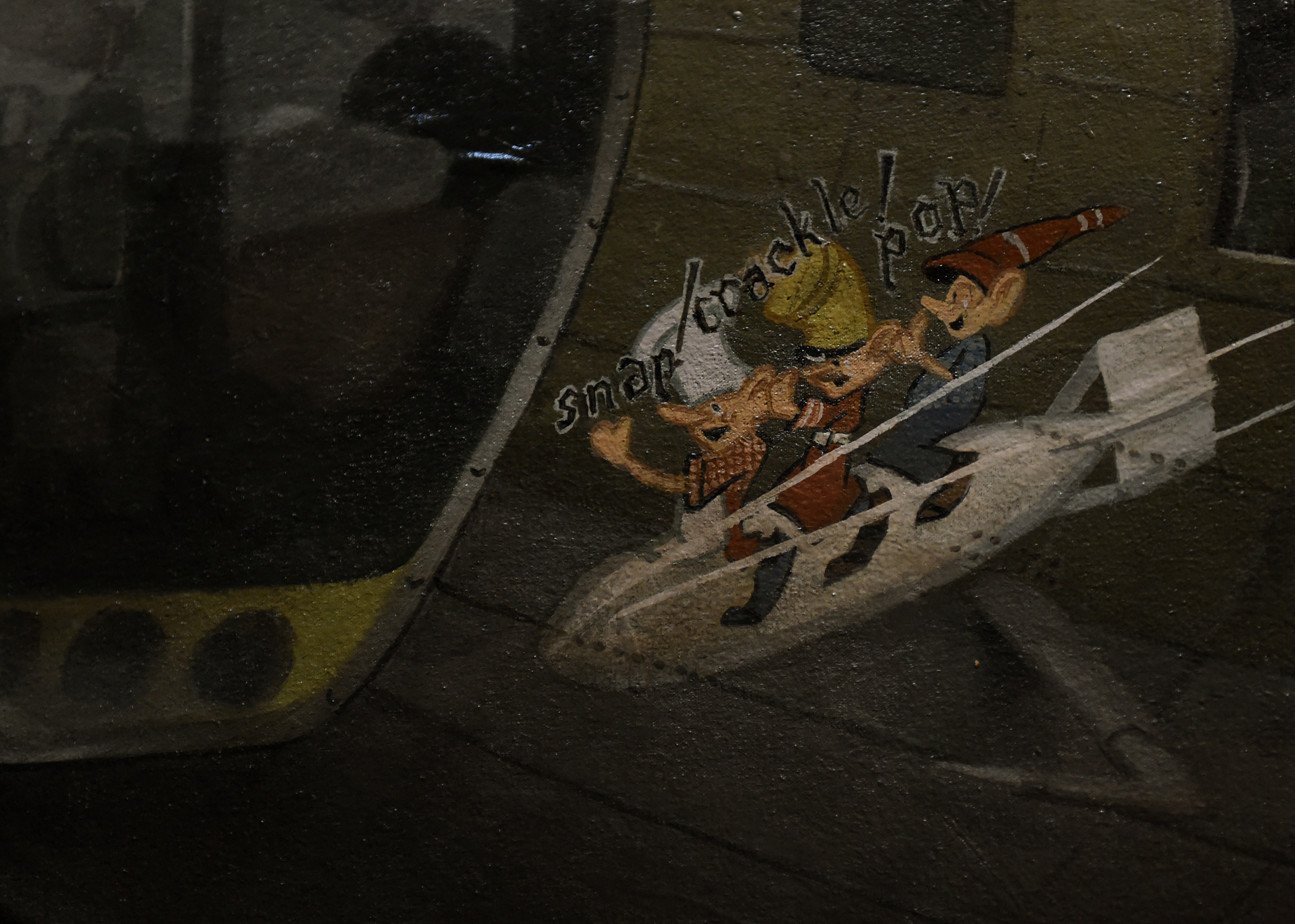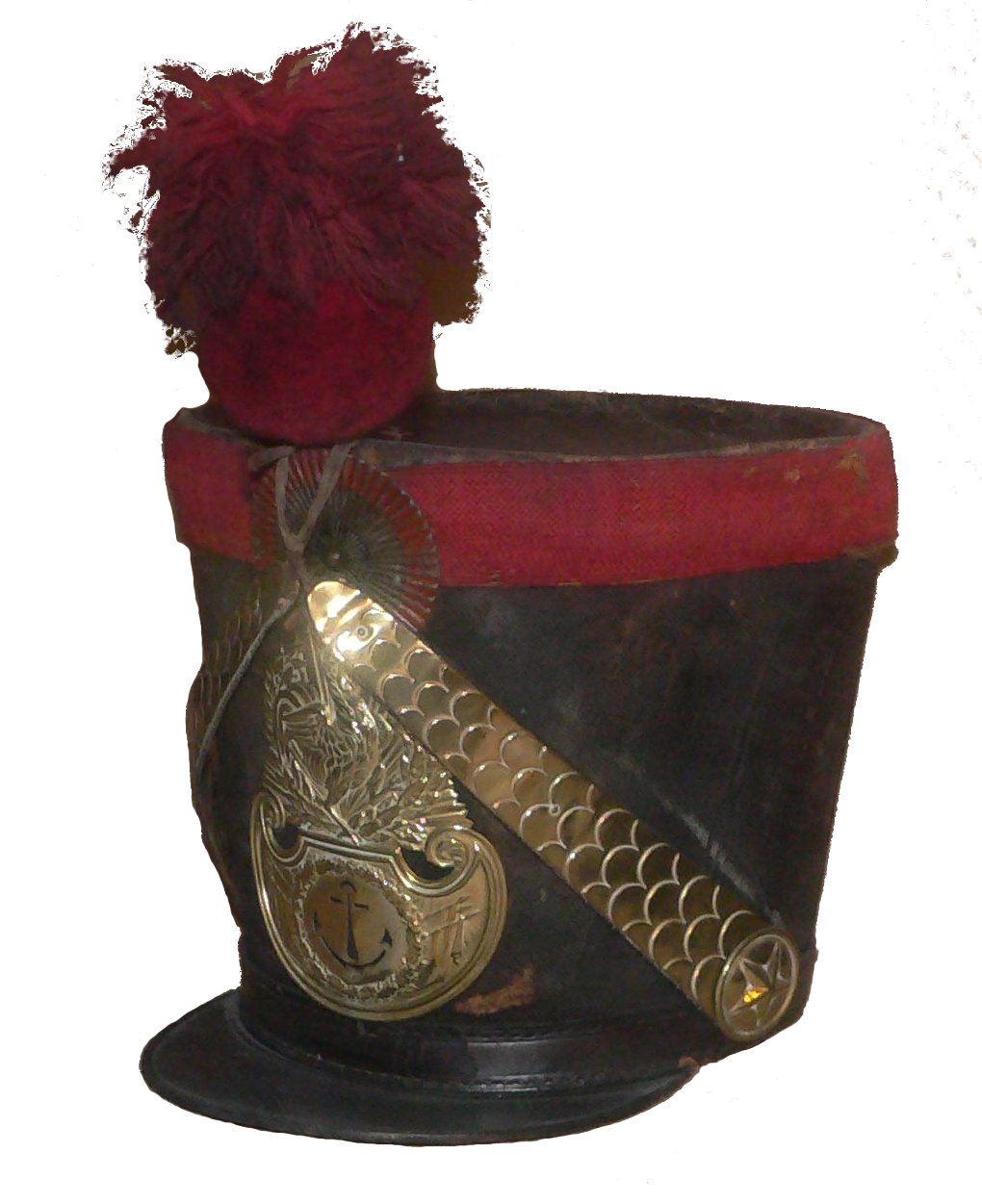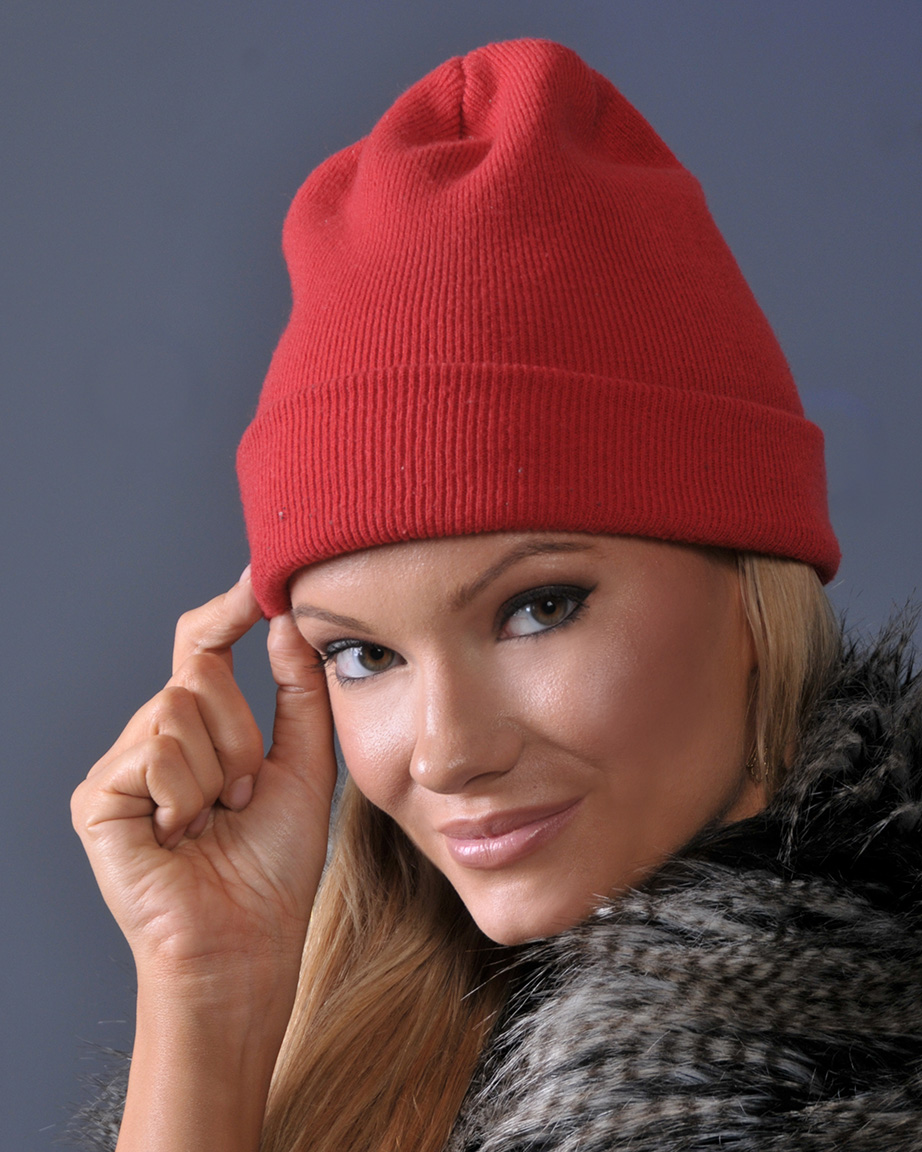|
Snap, Crackle, And Pop
Snap, Crackle and Pop are the cartoon mascots of Rice Krispies, a brand of breakfast cereal marketed by Kellogg's. History The gnome characters were originally designed by illustrator Vernon Grant in the early 1930s. The names are onomatopoeia and were derived from a Rice Krispies radio ad: The first character appeared on the product's packaging in 1933. Grant added two more and named the trio Snap, Crackle and Pop. Snap is usually portrayed wearing a chef's toque. Crackle often is shown wearing a red (or striped) tomte's tuque or "sleeping cap", and Pop often wears a drum major's shako, but is sometimes also seen with a chef's toque, or an odd combination of both a shako and a toque.Kellogg'"Snap! Crackle! Pop!"2007. Accessed 20 August 2010. Corporate promotional material describes their relationship as resembling that of brothers. Snap is the oldest and is known as a problem solver, Crackle is an unsure "middle child" and known as a jokester, and Pop is a mischievous yet ... [...More Info...] [...Related Items...] OR: [Wikipedia] [Google] [Baidu] |
Daws Butler
Charles Dawson Butler (November 16, 1916May 18, 1988) was an American voice actor. He worked mostly for the Hanna-Barbera animation production company where he originated the voices of many familiar characters, including Yogi Bear, Huckleberry Hound, Snagglepuss, Augie Doggie and Doggie Daddy, Auggie Doggie, Loopy De Loop, Wally Gator, Quick Draw McGraw and Baba Looey, Snooper and Blabber, Hokey Wolf, Elroy Jetson, Peter Potamus, The Funky Phantom and Help!... It's the Hair Bear Bunch!, Hair Bear. Early life and career Butler was born on November 16, 1916, in Toledo, Ohio, the only child of Charles Allen Butler and Ruth Butler. The family later moved from Ohio to Oak Park, Illinois, where Butler became interested in impersonating people. In 1935, the future voice master started as an Impressionist (entertainment), impressionist, entering multiple amateur contests and winning most of them. He had entered them not with the intention of showing his talent, but as a personal challeng ... [...More Info...] [...Related Items...] OR: [Wikipedia] [Google] [Baidu] |
Gnomes
A gnome is a mythological creature and diminutive spirit in Renaissance magic and alchemy, first introduced by Paracelsus in the 16th century and later adopted by more recent authors including those of modern fantasy literature. Its characteristics have been reinterpreted to suit the needs of various story tellers, but it is typically said to be a small humanoid that lives underground. Diminutive statues of gnomes introduced as lawn ornaments during the 19th century grew in popularity during the 20th century and came to be known as garden gnomes. History Origins The word comes from Renaissance Latin ''gnomus'', which first appears in ''A Book on Nymphs, Sylphs, Pygmies, and Salamanders, and on the Other Spirits'' by Paracelsus, published posthumously in Nysa in 1566 (and again in the Johannes Huser edition of 1589–1591 from an autograph by Paracelsus). The term may be an original invention of Paracelsus, possibly deriving the term from Latin ''gēnomos'' (itself representi ... [...More Info...] [...Related Items...] OR: [Wikipedia] [Google] [Baidu] |
Shako
A shako (, , or ) is a tall, cylindrical military cap, usually with a visor, and sometimes tapered at the top. It is usually adorned with an ornamental plate or badge on the front, metallic or otherwise; and often has a feather, plume (see hackle) or pompom attached at the top. Origins The word ''shako'' originated from the Hungarian name for the ''peak'', which Hungarian border soldiers ( ''Grenz-Infanterie'') added around 1790 to their previously visorless stovepipe-style hats. Originally these hats were part of the clothing commonly worn by shepherds, before being added to the uniform of the Hungarian hussar in the early 18th century. Other spellings include ''chako'', ''czako'', ''sjako'', ''schako'', ''schakot'' and ''tschako''. From 1800 on, the shako became a common military headdress worn by the majority of regiments in the armies of Europe and the Americas. Replacing in most instances the light bicorne, the shako was initially considered an improvement. Made of heavy ... [...More Info...] [...Related Items...] OR: [Wikipedia] [Google] [Baidu] |
Drum Major (marching Band)
A drum major or field commander is the leader of a marching band, drum and bugle corps, or pipe band, usually positioned at the head of the band or corps. The drum major is often dressed in more ornate clothing than the rest of the band or corps and is responsible for providing commands to the ensemble, leading them while marching, and directing them what to play, when to play, the dynamic or volume of playing, and what time to keep. The commands may be given verbally, through hand gestures, using a whistle or a baton, or with a mace. Although the drum major is the one conducting for the entire band to see and watch to keep time, the drum major is actually looking at the center snare's feet to keep time. The center snare is the leader of the drumline, and is the one who keeps the band in time while marching. They usually play, tap and/or rolls to set the tempo of how fast the band marches. In addition, the drum major serves as the liaison between the band director and the ... [...More Info...] [...Related Items...] OR: [Wikipedia] [Google] [Baidu] |
Tuque
A knit cap is a piece of knitted headwear designed to provide warmth in cold weather. It usually has a simple tapered shape, although more elaborate variants exist. Historically made of wool, it is now often made of synthetic fibers. Found all over the world where the climate demands warm clothing, knit caps are known by a variety of local names. In American English this type of hat is known as a ''beanie'' or a "watch cap,", while in Canadian English, a knit cap is known as a ', ', or ' (pronounced ). Construction Most knit caps are tapered at the top. The stretch of the knitting itself hugs the head, keeping the cap secure. They are sometimes topped with a pom-pom or loose tassels. Knit caps may have a folded brim, or none, and may be worn tightly fitting the head or loose on top. A South American tradition from the Andes Mountains is for the cap to have ear flaps, with strings for tying under the chin. A special type of cap called a balaclava folds down over the head wi ... [...More Info...] [...Related Items...] OR: [Wikipedia] [Google] [Baidu] |
Tomte
A (, ), tomte (), , or () is a mythological creature from Nordic folklore today typically associated with the winter solstice and the Christmas season. They are generally described as being short, having a long white beard, and wearing a conical or knit cap in gray, red or some other bright colour. They often have an appearance somewhat similar to that of a garden gnome. The nisse is one of the most familiar creatures of Scandinavian folklore, and he has appeared in many works of Scandinavian literature. With the romanticisation and collection of folklore during the 19th century, the nisse gained popularity. Terminology The word ''nisse'' is a pan-Scandinavian term. Its current use in Norway into the 19th century is evidenced in Asbjørnsen's collection. The Norwegian is also equated to ''nisse'' or ''tomte''. English translations While the term ''nisse'' in the native Norwegian is retained in Pat Shaw Iversen's English translation (1960), appended with the parenthetical ... [...More Info...] [...Related Items...] OR: [Wikipedia] [Google] [Baidu] |
Toque
A toque ( or ) is a type of hat with a narrow brim or no brim at all. Toques were popular from the 13th to the 16th century in Europe, especially France. The mode was revived in the 1930s. Now it is primarily known as the traditional headgear for professional cooks, except in Canada where the term ''toque'' is primarily used for knit caps. Name The word ''toque'' has been known in English since around 1500. It is a loan word from the French (15th century), presumably by the way of the Spanish 'woman's headdress', from Arabic طاقة, itself from Old Persian 'veil, shawl'. The word in Breton means 'hat'. The spelling with ⟨que⟩ is Middle Breton, and the Modern Breton spelling is . Old Breton spells the word . History and uses A tall, black toque made of silk or velvet, often ornamented with an aigrette, was fashionable among the Spanish nobility during the 1500s. This style is seen in a 1584 portrait of Isabella Clara Eugenia as well as Sofonisba Anguisso ... [...More Info...] [...Related Items...] OR: [Wikipedia] [Google] [Baidu] |
Advertisement
Advertising is the practice and techniques employed to bring attention to a product or service. Advertising aims to put a product or service in the spotlight in hopes of drawing it attention from consumers. It is typically used to promote a specific good or service, but there are wide range of uses, the most common being the commercial advertisement. Commercial advertisements often seek to generate increased consumption of their products or services through "branding", which associates a product name or image with certain qualities in the minds of consumers. On the other hand, ads that intend to elicit an immediate sale are known as direct-response advertising. Non-commercial entities that advertise more than consumer products or services include political parties, interest groups, religious organizations and governmental agencies. Non-profit organizations may use free modes of persuasion, such as a public service announcement. Advertising may also help to reassure employees ... [...More Info...] [...Related Items...] OR: [Wikipedia] [Google] [Baidu] |
Radio
Radio is the technology of signaling and communicating using radio waves. Radio waves are electromagnetic waves of frequency between 30 hertz (Hz) and 300 gigahertz (GHz). They are generated by an electronic device called a transmitter connected to an antenna which radiates the waves, and received by another antenna connected to a radio receiver. Radio is very widely used in modern technology, in radio communication, radar, radio navigation, remote control, remote sensing, and other applications. In radio communication, used in radio and television broadcasting, cell phones, two-way radios, wireless networking, and satellite communication, among numerous other uses, radio waves are used to carry information across space from a transmitter to a receiver, by modulating the radio signal (impressing an information signal on the radio wave by varying some aspect of the wave) in the transmitter. In radar, used to locate and track objects like aircraft, ships, spacecraf ... [...More Info...] [...Related Items...] OR: [Wikipedia] [Google] [Baidu] |
Onomatopoeia
Onomatopoeia is the process of creating a word that phonetically imitates, resembles, or suggests the sound that it describes. Such a word itself is also called an onomatopoeia. Common onomatopoeias include animal noises such as ''oink'', ''meow'' (or ''miaow''), ''roar'', and ''chirp''. Onomatopoeia can differ between languages: it conforms to some extent to the broader linguistic system; hence the sound of a clock may be expressed as ''tick tock'' in English, in Spanish and Italian (shown in the picture), in Mandarin, in Japanese, or in Hindi. The English term comes from the Ancient Greek compound ''onomatopoeia'', 'name-making', composed of ''onomato''- 'name' and -''poeia'' 'making'. Thus, words that imitate sounds can be said to be onomatopoeic or onomatopoetic. Uses In the case of a frog croaking, the spelling may vary because different frog species around the world make different sounds: Ancient Greek (only in Aristophanes' comic play ''The Frogs'') probably ... [...More Info...] [...Related Items...] OR: [Wikipedia] [Google] [Baidu] |
Vernon Simeon Plemion Grant
Vernon Simeon Plemion Grant (April 26, 1902 – July 9, 1990) was an American illustrator known for his whimsical gnome characters and fairy tale drawings. Over seven decades, Grant created hundreds of illustrations for advertising (General Electric, Gillette (brand), Gillette, The Hershey Company, Hershey's. Kellogg Company, Kellogg's) and major magazines, including ''Judge (magazine), Judge'' and ''Ladies' Home Journal''. He is best known as creator of Kellogg's Rice Krispies cereal characters Snap, Crackle and Pop, Snap! Crackle! and Pop! Biography Early life and education Grant was born on April 26, 1902, in Coleridge, Nebraska, to Oliver Simeon Grant and Chloe Barkley Grant. When Grant was six years old, his family moved to South Dakota where they Homestead Act, homesteaded. His experiences living on the prairies served as the inspiration for many of the artworks he would create throughout his career. While there he also learned illustration techniques from his beloved s ... [...More Info...] [...Related Items...] OR: [Wikipedia] [Google] [Baidu] |
Kellogg's
The Kellogg Company, doing business as Kellogg's, is an American multinational food manufacturing company headquartered in Battle Creek, Michigan, United States. Kellogg's produces cereal and convenience foods, including crackers and toaster pastries, and markets their products by several well-known brands including Corn Flakes, Rice Krispies, Frosted Flakes, Pringles, Eggo, and Cheez-It. Kellogg's mission statement is "Nourishing families so they can flourish and thrive." Kellogg's products are manufactured and marketed in over 180 countries. Kellogg's largest factory is at Trafford Park in Trafford, Greater Manchester, United Kingdom, which is also the location of its UK headquarters. Other corporate office locations outside of Battle Creek include Chicago, Dublin (European Headquarters), Shanghai, and Querétaro City. Kellogg's holds a Royal Warrant from King Charles III and formerly Queen Elizabeth II until her death in 2022. History In 1876, John Harvey Kellogg ... [...More Info...] [...Related Items...] OR: [Wikipedia] [Google] [Baidu] |








